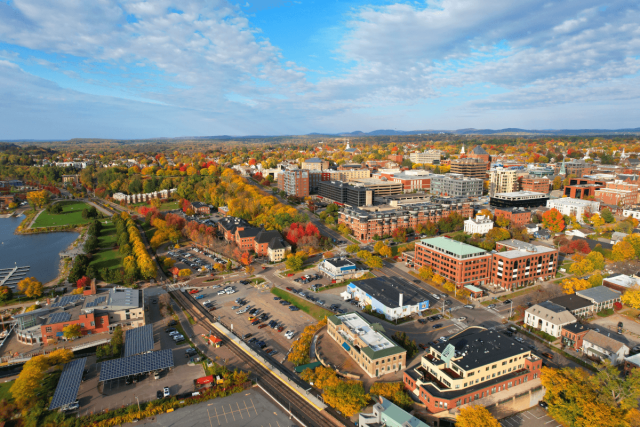Senior housing is in high demand and that means one thing: waiting lists. Whether you’re applying to a market-rate apartment or low-income housing, chances are you’ll need to wait your turn.
A senior housing waitlist is simply a record of applicants waiting for an available unit. However, the rules, timelines, and process can change greatly, depending on the type of housing. Understanding how these waitlists work is the key to finding your next home.
Key Takeaways
- A senior housing waitlist is a queue of eligible applicants waiting for an available unit in senior housing. Getting on the list requires submitting an application with required documents and meeting age or income qualifications based on the housing type.
- Approval timelines vary widely by housing type; market-rate senior housing can take just a few months, while subsidized options like Section 8 may have multi-year waits.
- To get approved and stay on a waitlist, applicants must meet initial requirements, submit all necessary paperwork, and follow ongoing rules. For low-income housing, this often includes annual updates and strict compliance; for market-rate communities, staying in touch and keeping contact details up-to-date is key.
Why Senior Housing Has Waitlists
The U.S. Census Bureau estimates that from 2020 to 2024, the age 55+ population increased by five million people to just shy of 103 million. It accounts for 30.2 percent of the population — almost one third of the entire U.S. population. Baby Boomers largely contributed to this growing older population from 2010 to 2020; in 2020 almost half of them were over 64 and the rest were at least 56.
As generations age, the need for senior housing continues increasing. The entire Baby Boomer generation will be at least 65 by 2030, and many may choose to seek out senior housing. This demand will tighten availability, leading to more waitlists and longer wait times.
Types of Senior Housing with Waitlists
Low-income or subsidized senior housing is designed for older adults who meet specific income limits, with rent often based on a percentage of their income or supported by government programs. There are often laws that cap rent increases on this type.
Market-rate senior housing, on the other hand, doesn’t adjust rent by income — residents pay the rental price that is set by the community. Rent increases are typically allowed and they are dictated by the community, unless there are local laws that state otherwise.
How to Find Senior Housing Waiting Lists
Depending on the type of housing you’re looking for, market-rate apartments or low-income senior housing, your search process will vary. For 55+ communities, check out online rental marketplaces, like Apartments.com or After55.com. To find low-income senior housing, contact your local public housing agency or the U.S. Department of Housing and Urban Development (HUD) website.
How to find senior housing on Apartments.com
Apartments.com understands the difficulties of finding senior housing, which is why they’ve made it so easy. Simply search the area you’re investigating and then click “All Filters.” Scroll down to “Specialty Housing” where you can select “Senior” under “Housing Type.” This will narrow your options to only senior housing.
How to Apply to Senior Housing Waitlists

Before you apply to senior housing, you’ll need to ensure that you meet the eligibility requirements. Depending on the type of housing, the criteria differs.
55+ communities are more like a typical apartment community with the usual screening procedures, but they also have a minimum age. Affordable senior housing is a bit stricter with more requirements, like having an income below the limit.
After you’ve checked if you meet the parameters, then you’ll apply. Most places require you to fill out an application and submit it along with required documents. Depending on the community and type of housing, the exact procedure can vary.
How to get on a low-income senior housing waiting list
Low-income senior housing is a whole different game compared to market-rate communities. They have different requirements and steps that you must follow. There is often stricter requirements and more information you have to provide.
These waitlists are opened at the discretion of your public housing agency so you may have to wait to apply. Check your public housing authority’s website and the local news to stay up to date on the waitlist status and find out more about the process.
How Long Does It Take to Get Approved for Senior Housing?
Depending on the type of senior housing you are looking for, waits can range from months to years. For those looking for Section 8 or low-income/subsidized senior housing, you could find yourself waiting years.
Market-rate communities have much shorter waitlists or no wait at all as they function much more like typical apartments. They are still in high demand, so you may have to wait a couple of months.
Factors that influence waitlist times
Wait times vary depending on a variety of factors:
- Senior housing type: Affordable or subsidized senior housing usually has longer waits than market-rate options due to higher demand and limited supply.
- Approval and selection process: Some low-income waitlists are lottery based while others are based on need or first-come, first-served basis. Market-rate communities follow the more common process of screening and choosing renters.
- Location: Communities in high-demand areas or major cities tend to have longer waitlists because more people are applying for limited units.
- Time of year: especially for market-rate senior housing, demand can fluctuate based on season, just like regular apartments. More people tend to move during the spring and summer, which can make wait times lengthen.
How to Manage Your Senior Waitlist Status
Once you’ve submitted your application, you’ll be placed on a waitlist. To increase your chances of being approved, you should know about the waiting process for each type of senior housing.
How to manage your status on low-income senior housing waitlists
Low-income programs have compliance rules that you must follow in order to stay on the waitlist. It is common for applicants to be required to update or confirm their information each year to maintain their spot. Failure to respond or update information can lead to removal from the list.
To avoid being removed, make sure you know what is required of you. Ask the agency when you apply and check the website periodically. Often, there are informational sessions or resources about the process to assist you.
How to manage your status on market-rate housing waitlists
Market-rate communities operate more like standard rental housing, meaning you usually don’t have to confirm or update annually. As long as your name is on the list, they’ll contact you when there’s availability.
However, they usually won’t reach out until your name reaches the top of the list. It’s a good idea to stay in contact and check back every couple of months to make sure you’re still on the list and get an update on how long the wait is.
Make sure that your contact information is correct and maybe even include a secondary contact so that the community can reach you. If you do not respond in a timely manner, it’s likely you’ll lose out on the rental.
What Happens Once You’re Approved for Senior Housing

Once your name gets closer to the top of the list, the senior community or housing agency will conduct their screening process, including background, credit, and reference checks. From there on, you’ll do the usual renter steps, like signing a lease.
What happens after you’re approved for low-income senior housing
Approval for low-income senior housing is a bit more formal with some additional steps. Generally, you’ll be contacted about your approval and receive an official letter or notice before you go to the next part of your journey. Review the process carefully to make sure your approval and apartment search goes smoothly.
Discover Senior Housing Near You
Ready to get on a senior housing waitlist? Apartments.com makes it easy to browse senior communities of all kinds, whether you’re looking for market-rate or low-income. Find the perfect option that feels right for you in a couple of clicks.
This article was originally published on March 17, 2023.
FAQs About Senior Housing Waitlists
What qualifies you for senior housing?
Requirements can vary depending on the housing type, but you usually have to be a certain age. The actual age can vary, but common age requirements are 55 and 62. For government programs and housing, you might also have to have an income below a specific limit and meet other specific criteria.
What is classified as low income for seniors?
What is classified as low income for seniors is based on a percentage of the area median income (AMI). This means that it varies by location, so check local government and public housing agency websites for the exact limit.
How long is the wait for subsidized senior housing?
The wait for low-income senior housing can take anywhere from a couple of months to years, depending on factors such as location and selection process.
Can I be removed from the senior housing waiting list?
Yes, you can be removed from a senior housing waitlist if you don’t respond in a timely manner or miss periodic interest checks. To avoid being removed, keep in contact, check back regularly, and make sure your contact information is correct.






